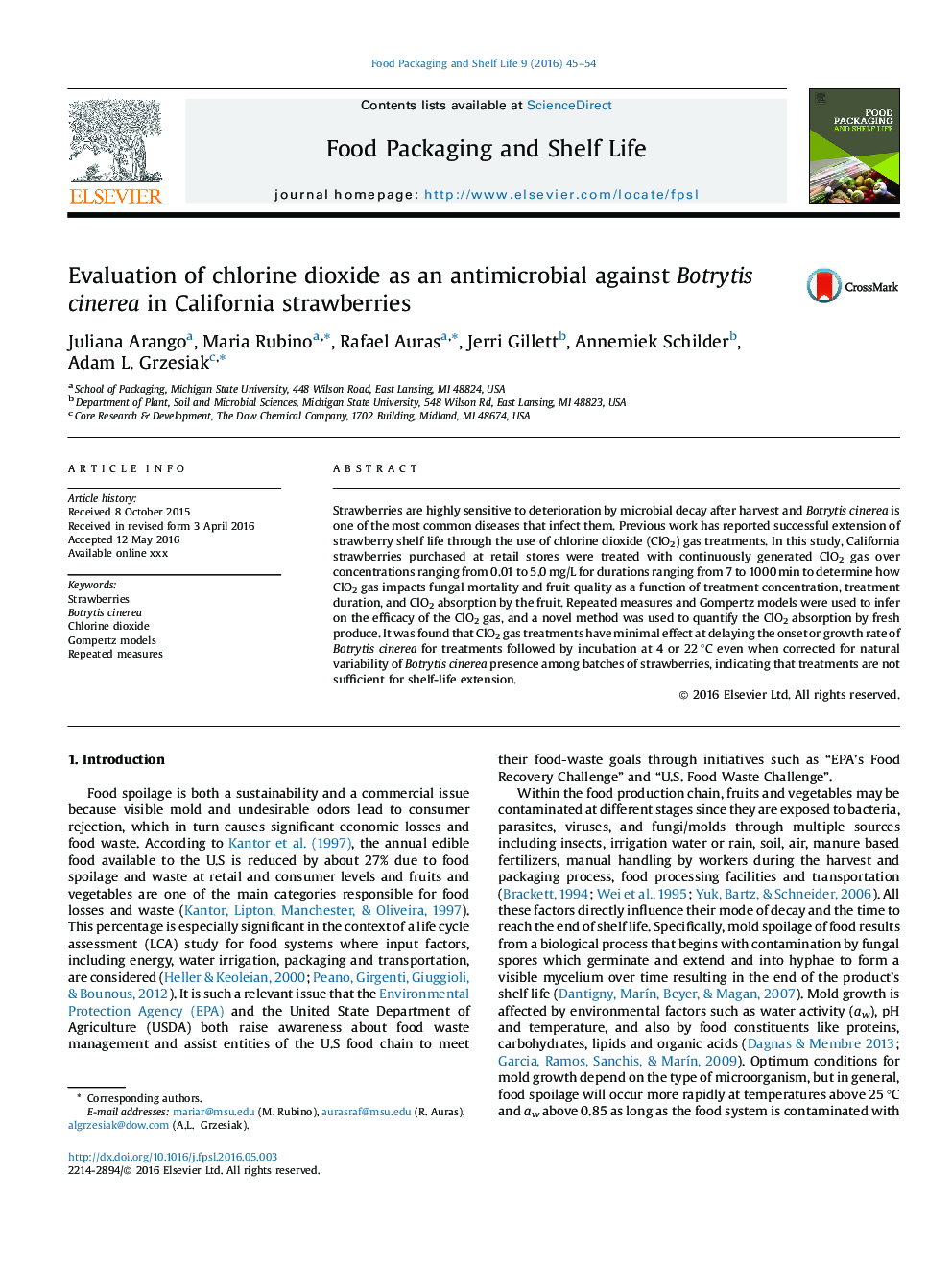| Article ID | Journal | Published Year | Pages | File Type |
|---|---|---|---|---|
| 19791 | Food Packaging and Shelf Life | 2016 | 10 Pages |
•Effect of ClO2 gas on Botrytis cinerea on strawberries.•Effect of concentration temperature exposure time on efficacy.•Repeated measures and Gompertz models were used to determine efficacy.•Novel method quantify ClO2 gas absorption by fresh produce for each treatment.
Strawberries are highly sensitive to deterioration by microbial decay after harvest and Botrytis cinerea is one of the most common diseases that infect them. Previous work has reported successful extension of strawberry shelf life through the use of chlorine dioxide (ClO2) gas treatments. In this study, California strawberries purchased at retail stores were treated with continuously generated ClO2 gas over concentrations ranging from 0.01 to 5.0 mg/L for durations ranging from 7 to 1000 min to determine how ClO2 gas impacts fungal mortality and fruit quality as a function of treatment concentration, treatment duration, and ClO2 absorption by the fruit. Repeated measures and Gompertz models were used to infer on the efficacy of the ClO2 gas, and a novel method was used to quantify the ClO2 absorption by fresh produce. It was found that ClO2 gas treatments have minimal effect at delaying the onset or growth rate of Botrytis cinerea for treatments followed by incubation at 4 or 22 °C even when corrected for natural variability of Botrytis cinerea presence among batches of strawberries, indicating that treatments are not sufficient for shelf-life extension.
